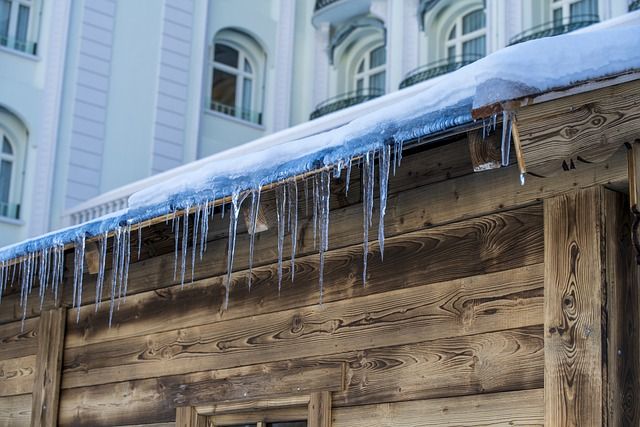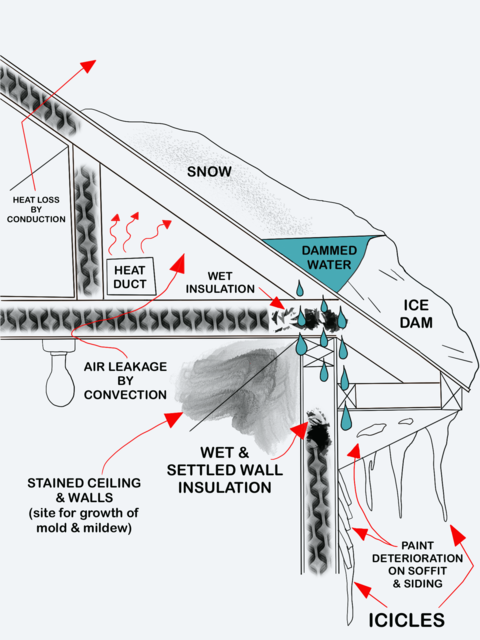4 Methods for Fixing Ice Dams
Ice dams can be very destructive if left unattended. Here are 4 ways to take on these wintery pests.

Ice dam origins
Ice dams seem to have been a real scourge this winter. To be honest, I didn't even know what one of these destructive little beauties was until I moved to Minnesota. At my first house, I found out fast. Sitting in the living room one typical frigid Minnesota day, I heard water dripping inside the outside walls. That's not a sound you ever want to hear. After a quick consultation with a neighbor, I was introduced to ice dams.
How do they form?
Once you have snow on your roof, it will begin to melt. That's fine initially, as it runs down the roof into the gutters. However, in a Minnesota winter, the gutters fill and freeze with alarming rapidity. You have the start of an ice dam. As the snow continues to melt, the water begins to collect behind the dam.
Left to its own devices, the results can be spectacular icicles or, worse, water inside your domicile. The water gets into your home when it moves back up the roof and under the shingles. Unfortunately, shingles are installed to prevent water entry from water running down the roof, not up.
Here's an excellent U of MN Extension graphic showing the process.

Solving the ice dam problem
What are your options when fighting this problem? Here are four for your consideration.
1. Install heating wires
This first method involves the installation of heating wires that melt channels in the ice dam and let the water flow off the roof. Typically installed on the roof at the gutter's edge in a sawtooth pattern, they can also be installed inside the gutters and downspouts to channel the meltwater into your yard. While looking for cool pictures of this solution, I found a really well-done website in Utah, Warmzone. They Explain all about these systems and offer excellent photos.
Note: I have no affiliation with Warmzone or any other heating cable company.
Pros:
- They work well, in my experience. Your results may vary.
- You don't need to do anything other than plug them in and let them do their job.
- You never need to climb a ladder during the winter to implement solutions 2 or 3.
Cons:
- They take more maintenance than you'd imagine, coming undone over time or due to using roof rakes to remove snow.
- They require electricity, adding that expense to your bill. How much depends on the total wattage of your installation. You can read how to calculate that cost in my article about electric space heaters.
2. Replace the lower shingle courses with metal
If you plan ahead, you can install an 18" wide lower course of metal that replaces your shingles directly above the gutters. These metal sheets prevent or delay the flow of water from the dam back up the roof and under your shingles.
Pros:
Fairly effective.
Cons:
Pricey and not infallible.
Not an easy DIY project.
3. Melt your own channels
This option eventually became my go-to solution. An old hand at Minnesota winters suggested taking nylon stockings (not good ones, those with runs and such) and filling them with salt. Lay them on the ice dam regularly in a V-shape (the point directed up the roof). Make sure the stocking ends extend to the outer edge of the gutter.
As the salt melts the ice, it runs through the stockings and to the ground. The salt keeps the channel open for a good while. Just be sure to use salt that doesn't damage plants. Gosh, it made me feel like Grizzly Adams or something equivalent, toughing it out on the frontier in Minnesota.
4. Go somewhere warm for the winter
Okay, this approach may be a head-in-the-sand (or toes-in-the-sand, depending upon your destination) and is certainly outside my reach. You may be wondering if this will prevent ice dams and damage in your absence. It can minimize the risk because you set your home's temperature much lower than when you are there, say to 60o F +/- a couple of degrees. This reduces the temperature differential (Delta-T, for those in the HVAC biz) between the inside and outside. The heat doesn't run as often, resulting in less melt and smaller dams, if any.
Upgrade your insulation
Note: I didn't address this option in the original post because it is not a simple fix, even though it can be a DIY project for some courageous souls out there (we hired it out this summer).
One of the best ways to eliminate or drastically reduce ice dams involved upgrading your insulation and improving the ventilation of your unheated spaces. The U of MN Extension graphic illustrates how incorrect or inadequate insulation and ventilation can lead to ice dams. The Extension's page with the graphic offers additional information and suggestions on this complex topic. Perhaps I should start another blog called "Complex-Fixes."
